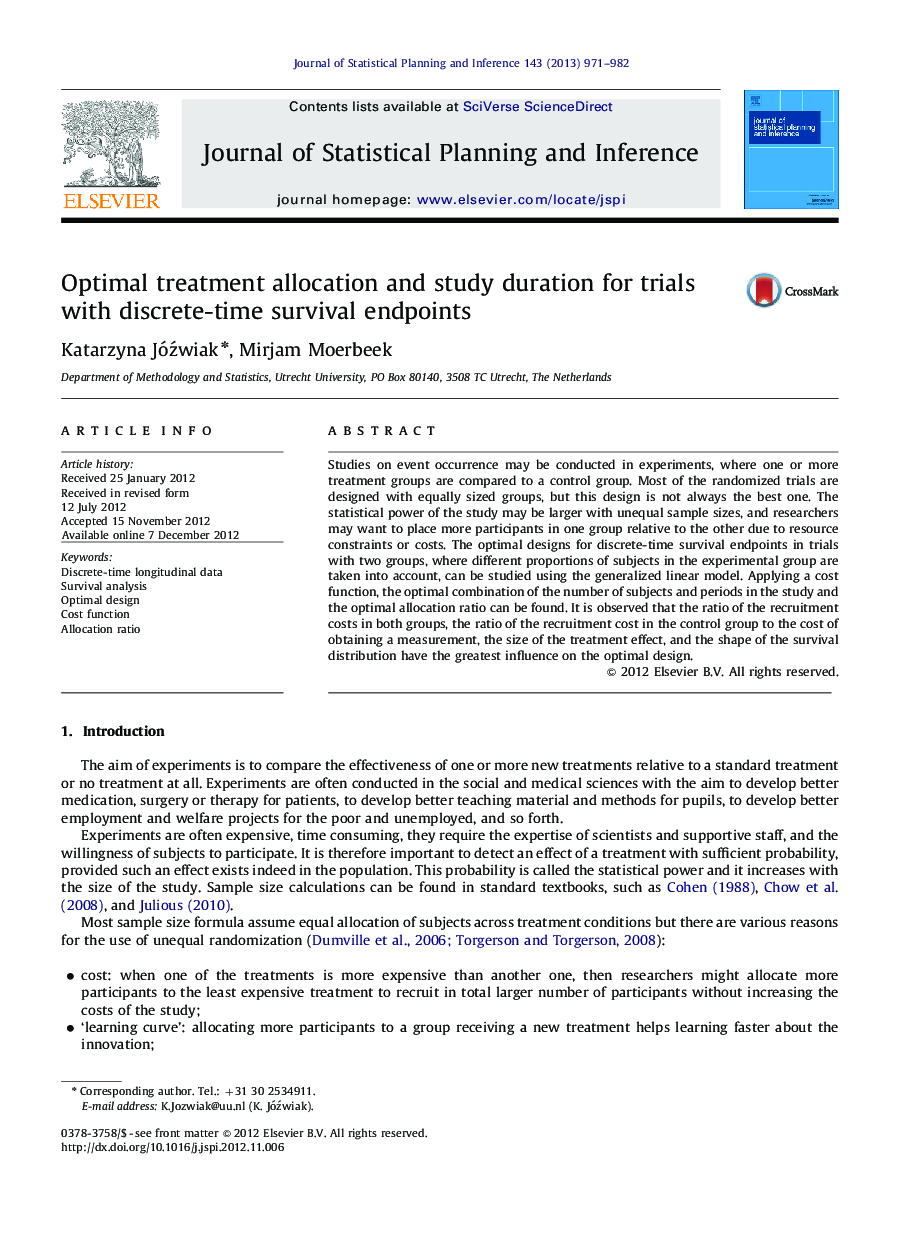| Article ID | Journal | Published Year | Pages | File Type |
|---|---|---|---|---|
| 10524910 | Journal of Statistical Planning and Inference | 2013 | 12 Pages |
Abstract
Studies on event occurrence may be conducted in experiments, where one or more treatment groups are compared to a control group. Most of the randomized trials are designed with equally sized groups, but this design is not always the best one. The statistical power of the study may be larger with unequal sample sizes, and researchers may want to place more participants in one group relative to the other due to resource constraints or costs. The optimal designs for discrete-time survival endpoints in trials with two groups, where different proportions of subjects in the experimental group are taken into account, can be studied using the generalized linear model. Applying a cost function, the optimal combination of the number of subjects and periods in the study and the optimal allocation ratio can be found. It is observed that the ratio of the recruitment costs in both groups, the ratio of the recruitment cost in the control group to the cost of obtaining a measurement, the size of the treatment effect, and the shape of the survival distribution have the greatest influence on the optimal design.
Related Topics
Physical Sciences and Engineering
Mathematics
Applied Mathematics
Authors
Katarzyna Jóźwiak, Mirjam Moerbeek,
